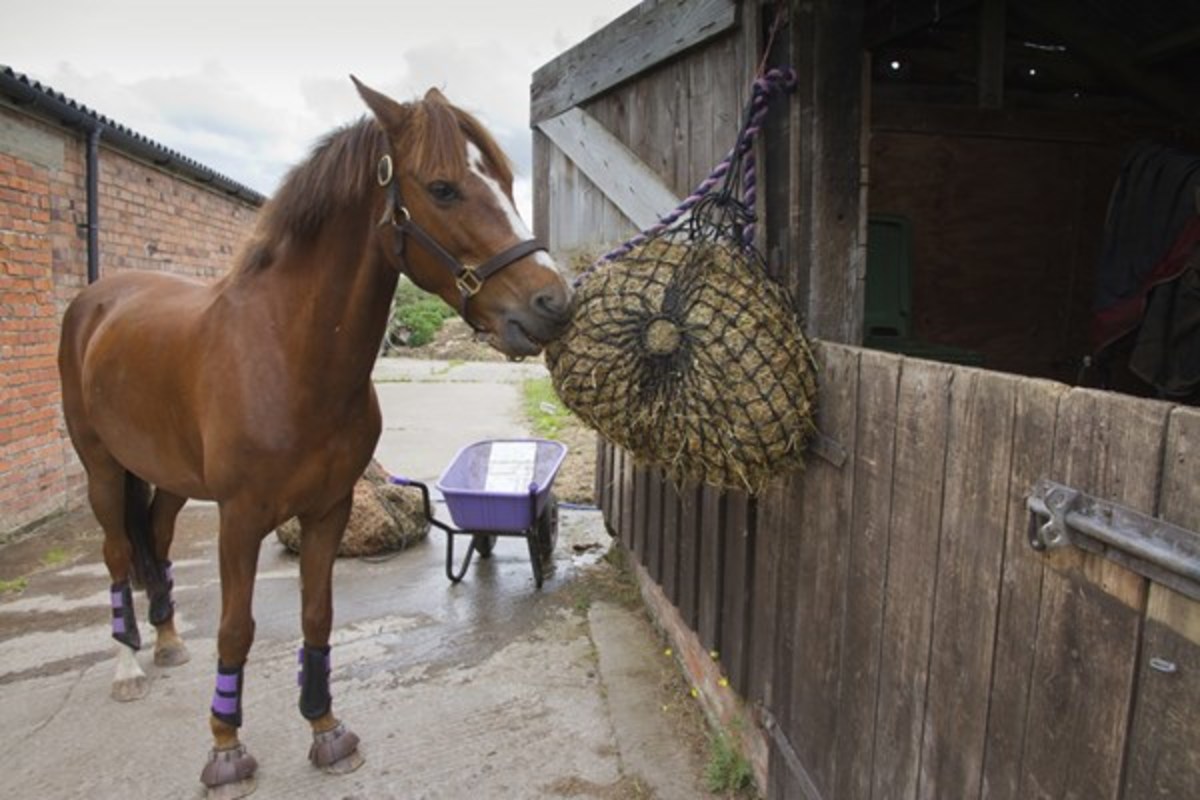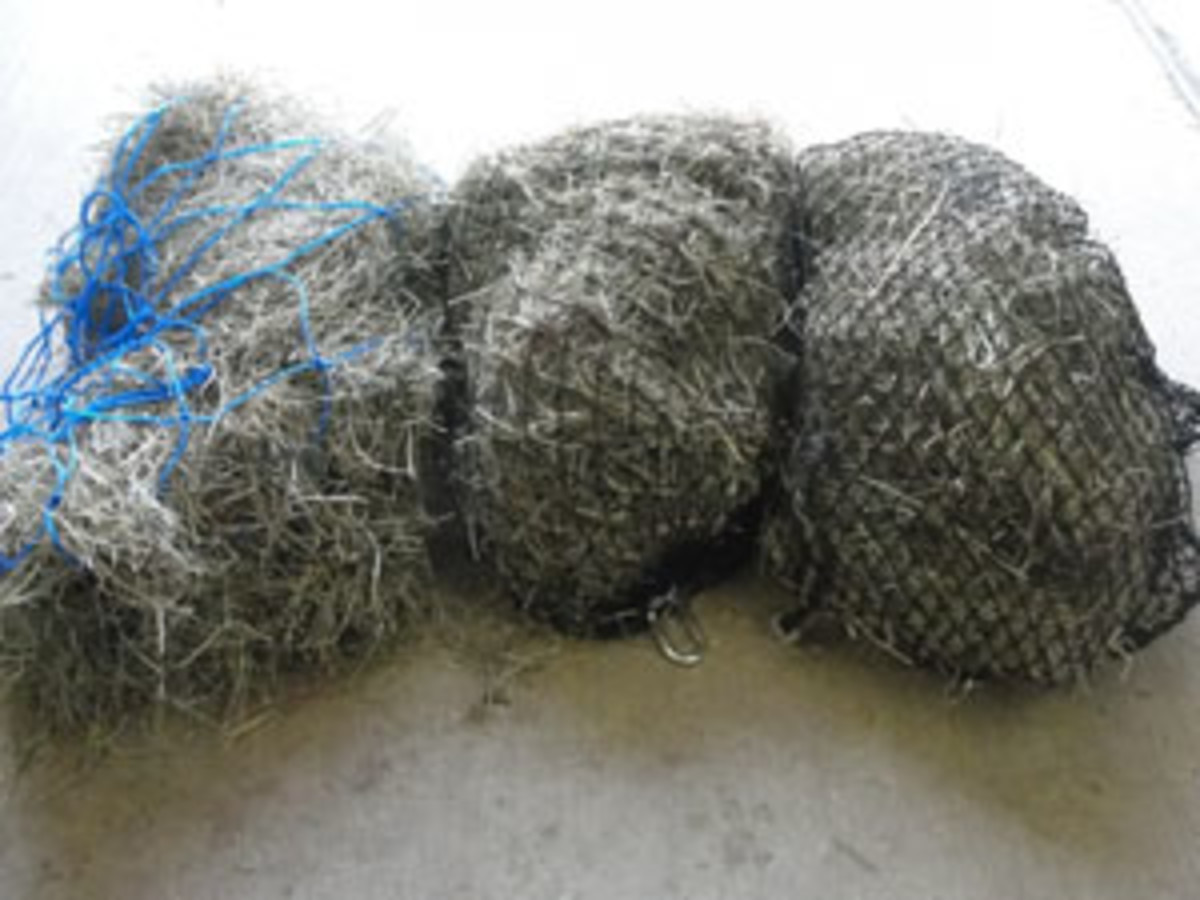
Horses have evolved to consume several small forage-based meals throughout the day, often spending greater than 14.5 hours grazing each day. However, many of today’s horses are housed in stalls or dry lots, fed two large meals each day, and have limited opportunity to forage. To mimic a more natural feeding pattern, many horse owners provide unlimited access to hay. In many cases, this results in obesity because the horses tend to consume hay in excess of their energy requirement. Therefore, it is of interest to identify feeding methods that reduce excess intake, but extend the foraging period beyond a few hours around meal time.
The objective of this research was to investigate the effect of hay net design on the rate and amount of forage consumed by adult horses.
Materials and Methods
Eight adult horses in were fed in individual stalls. Horses were fed hay off the stall floor (control), or from one of three hay nets: large net (6 inch openings), medium net (1.75 inches) and small net (1.0 inch). Horses were acclimated to their assigned treatment for two days, followed by three days of data collection, and a wash-out period of two days. Horses had access to hay inside the nets for two four-hour periods: 7:00 to 11:00 a.m. and 4:00 to 8:00 p.m. each day. Throughout the trial, grass hay was fed at 1% body weight twice each day. To determine forage consumption rate, stopwatches were started once horses began eating, and stopped once horses either finished all offered hay, were no longer interested in eating, or the four-hour time period had expired. All refuse hay was collected and weighed. Total forage consumed was calculated by subtracting amount of refuse from hay offered.

Results
Mean consumption rates in pounds per hour were 3.3 (control), 2.9 (large net), 2.4 (medium net), and 1.9 (small net). Horses were able to consume all hay from the control and large during the four-hour feeding period, but not all horses finished the hay meal when fed from the medium and small nets.
Mean percentage of offered hay consumed was 95% (control), 95% (large net), 89% (medium net) and 72% (small net).
A second study revealed that horses feeding from the medium net took just over five hours to consume the hay meal, while horses eating from the small nets took 6.5 hours to consume the meal. The control and large net resulted in consumption times of 3.2 and 3.4 hours, respectively.
Benefits to the Equine Industry
These results demonstrate that the small or medium nets were effective in decreasing rate and amount of forage consumed and increasing the total time of forage consumption by adult horses. If small or medium hay nets were used for twice daily feedings in a stall setting, the anticipated amount of time horses would spend foraging would be 10 to 13 hours each day; more closely mimicking a horse’s natural grazing behavior. Small and medium hay nets represent simple and affordable management tools for extending foraging time when meal feeding horses. However, use of the small and medium hay nets is not likely practical for all horses and it does take time (usually four to five feedings) for horses to acclimate to feeding from the nets.
This article was written by K. Martinson, E. Glunk and W. Weber from the University of Minnesota Horse Extension.



